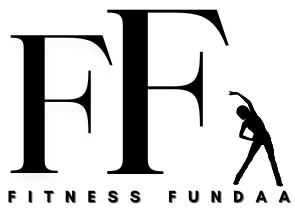For ages, women have been targeted as weaklings and certain myths always revolve around them therefore, the importance of debunking these misconceptions works as a way to empower women to embrace strength training with confidence. This article underscores the positive impact that engaging in strength training can have on overall health and well-being, creating a foundation for a transformative journey, especially for women who may have hesitated due to misinformation.
Myth 1: “Lifting Heavy Will Make You Bulky”:
To dispel this myth, we delve into the physiological distinctions between men and women in terms of muscle development. Women, have lower levels of testosterone as compared to men which makes it difficult for them to achieve the same level of muscle hypertrophy as men. Lifting heavy weights, when combined with proper nutrition and training, contributes to the development of lean muscle mass. The emphasis is on achieving a sculpted and toned physique rather than bulk. Women’s bodies tend to respond to strength training by becoming firmer and more defined, enhancing muscle tone without excessive size.
Developing a bulky physique is not solely a result of lifting heavy weights but often involves a deliberate effort to consume a caloric surplus. Bulking requires a specific approach to nutrition that includes consuming more calories than the body expends. Women engaging in regular strength training without a caloric surplus are unlikely to experience significant muscle bulk. The response to strength training varies among individuals. Genetics, body composition, and hormonal factors all play roles in how someone’s body will respond to resistance training. Some women may naturally build muscle more easily than others, but this does not necessarily lead to a bulky appearance.
Resistance training is a crucial component of a well-rounded fitness routine. Incorporating a mix of strength training, cardiovascular exercise, and flexibility work promotes overall health and fitness. Women can tailor their training programs to achieve their specific goals, whether it’s increased strength, improved endurance, or enhanced muscle tone. Numerous women who engage in heavy lifting have achieved strong and toned physiques without appearing bulky. Athletes, fitness professionals, and everyday individuals demonstrate through their experiences and transformations that lifting heavy weights can result in a fit, lean, and healthy appearance.
Myth 2: “Strength Training is Only for Men”
Contrary to the outdated belief that strength training is reserved for men, the reality reflects a diverse and inclusive landscape. Women across various fitness communities actively engage in strength training, challenging the historical and cultural stereotypes that once confined it to a male domain. The evolution of societal norms has seen a significant shift, with women participating vigorously in weightlifting, powerlifting, and strength-focused activities. Female athletes and fitness influencers serve as influential role models, dispelling the myth and actively advocating for the inclusivity of strength training.
Beyond physical benefits, strength training empowers women both mentally and emotionally, fostering confidence and positive body image. The contemporary fitness culture embraces this inclusivity, actively encouraging and supporting women in their strength training pursuits. It is evident that strength training is not exclusive to men; it is a universal and empowering practice that contributes to the holistic well-being of individuals, regardless of gender.
Myth 3: “Cardio is the Only Way to Lose Weight”
Contrary to the belief that weight loss relies solely on cardio, a comprehensive approach is key. While cardio aids calorie burn, strength training boosts metabolism, promoting fat loss. Nutrition is pivotal. A balanced diet, combined with both cardio and strength training, ensures effective and sustainable weight management. Dispelling this myth encourages a holistic fitness approach for overall well-being.
Benefits of Strength Training for Women:
Engaging in strength training offers women a multitude of physical and mental benefits. By incorporating this form of exercise, women can notably enhance their bone density, reducing the risk of conditions like osteoporosis. The process of strength training contributes to an improved metabolism, aiding in effective weight management. This training also leads to increased functional strength, translating to better performance in daily life activities. Beyond the physical, the positive impact on mental health is substantial, encompassing stress reduction and mood improvement. This comprehensive approach underscores the holistic advantages of making strength training an integral part of women’s fitness routines.
A Guide for Beginners
- Understanding the Basics:
- Begin with understanding the fundamentals of strength training. Familiarize yourself with key terms, basic principles, and the benefits of strength training for women. This foundational knowledge forms the basis for a confident start.
- Emphasis on Proper Form and Technique:
- Prioritize proper form and technique in each exercise as mastering the correct movements not only maximizes the effectiveness of the workout but also minimizes the risk of injuries. Begin with bodyweight exercises to grasp the mechanics before incorporating additional resistance.
- Start with Basic Strength Exercises:
- Begin with compound movements such as squats, deadlifts, and bench presses engage multiple muscle groups, fostering overall strength development. Focus on these foundational exercises to build a strong base.
- Selecting Appropriate Weights:
- Appropriate weight selection is crucial. Choose weights that challenge you without compromising form. Gradually increase resistance as your strength improves. This step-by-step approach aligns with your current fitness level, promoting consistent progress.
- Gradual Progression in Intensity:
- Understand that strength development is a gradual process. Begin with a manageable intensity and progressively increase as your body adapts. Consistency is key, and gradual progression minimizes the risk of overtraining and burnout.
- Balanced Routine:
- Follow a balanced approach. Incorporate both upper and lower body exercises to ensure overall strength development. Include a mix of resistance training and cardiovascular activities for a well-rounded fitness routine.
- Recovery and Rest:
- Acknowledge the importance of rest and recovery. Logical training involves giving your muscles time to repair and grow stronger. Listen to your body, prioritize sleep, and include rest days in your routine.
- Seeking Professional Guidance:
- Seek guidance from fitness professionals or trainers enhances your understanding and ensures proper execution. Consider consulting with experts to create a personalized plan aligned with your goals and capabilities.
In conclusion, dispelling age-old myths surrounding women and strength training is vital for empowerment, encouraging a confident embrace of this transformative practice. The article emphasizes the positive impact of strength training on overall well-being, addressing misinformation that may have deterred women. Myth #1, logically delves into physiological differences, debunking the notion that lifting heavy results in bulk for women. Myth #2 dismantles the stereotype that strength training is exclusively for men, highlighting a diverse and inclusive fitness landscape.
Myth #3 challenges the idea that cardio alone is the key to weight loss, advocating for a comprehensive approach that includes strength training and balanced nutrition. The benefits of strength training for women, from improved bone density to mental well-being, underscore its holistic advantages. The guide for beginners follows a logical progression, emphasizing basics, proper technique, foundational exercises, and a balanced routine. In essence, the narrative encourages women to break free from stereotypes, embrace strength training, and embark on a journey to holistic well-being with confidence and knowledge.
FAQs Answered
-
Will lifting heavy weights make women bulky?
- No, lifting heavy weights enhances muscle tone without excessive bulk. Women’s lower testosterone levels make significant muscle hypertrophy challenging.
-
Is strength training only for men?
- No, strength training is inclusive. Women actively engage in various fitness communities, challenging historical stereotypes. Female athletes and influencers promote inclusivity.
-
Is cardio the only way for women to lose weight?
- No, a comprehensive approach is key. While cardio aids calorie burn, strength training boosts metabolism. Combined with balanced nutrition, it ensures effective and sustainable weight management.
-
What are the benefits of strength training for women?
- Benefits include improved bone density, reduced osteoporosis risk, enhanced metabolism, increased functional strength, positive effects on mental health, reduced stress, and improved mood.
-
How can beginners start strength training?
- Start with understanding basics, prioritize proper form, begin with basic exercises, choose appropriate weights, progress gradually, follow a balanced routine, prioritize recovery, and consider seeking professional guidance for a personalized plan.
see also :Top 10 Fittest Women on Earth

